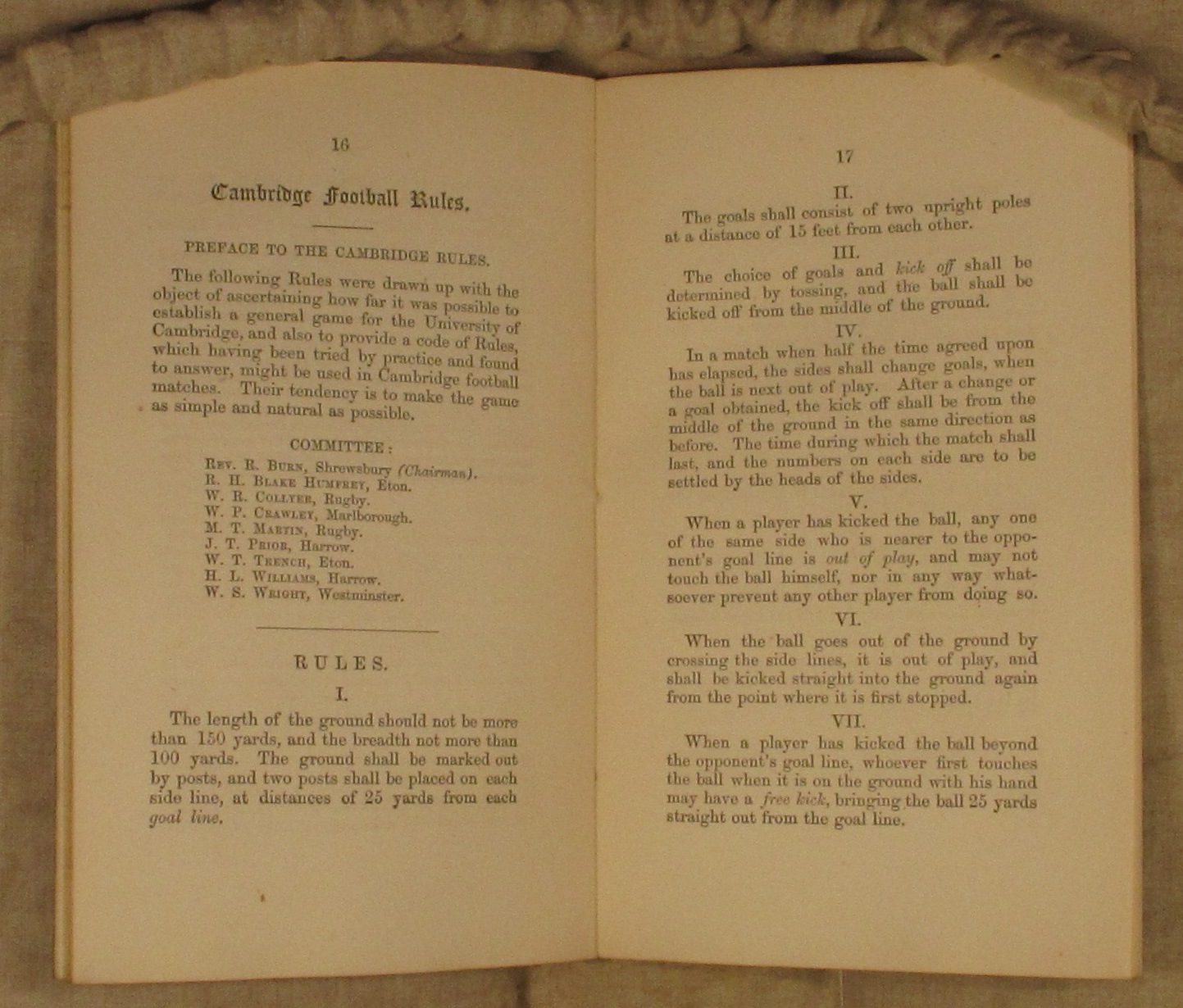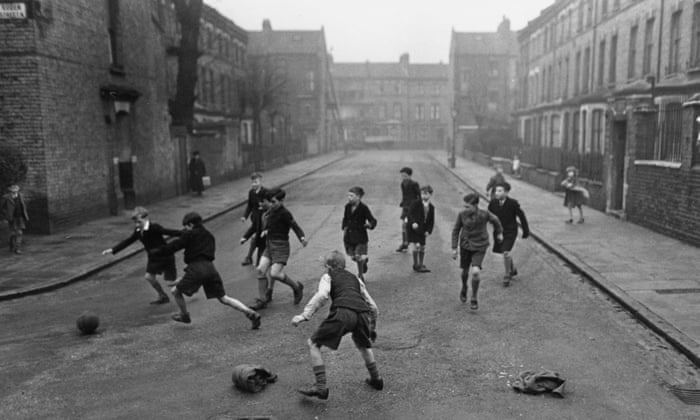Football and Education: Class, Identity and the Dunce Hat
In the mid-19th Century, Britain was in a small crisis. Following the Napoleonic Wars and the gradual growth of the British Empire, defeat in the Crimean War highlighted a steep decline in fitness, teamwork and morals. Public schools began to place great importance on the role of physical education during this time, each with distinct motivations - be it social control or idealism. [1]
In fact, football had started to be played in schools as early as 1829, where it is documented in The Hampshire Chronicle that St Thomas' School played against Archbishop's Temple School - winning 8-3. [2] Which rules these two schools played with is a mystery, but what is known is that upon reaching university confusion was rife. This was due to the different rules of the student's former schools - leading to the adoption of the Cambridge Rules in 1848.
 |
| Cambridge Rules |
It is commonplace to read about the public school influence but what about the state schools? British history is one defined by class and identity and it was not until 1870 that Forster's Elementary Education Act proposed education for all children 5 to 12. A year later saw the first FA Cup and by 1872, the first international between England and Scotland. The working-classes by this point had begun to be taken in by the game, as spectatorship rapidly rose.
Education in the late Victorian/early Edwardian period was very strict. Classes taught would focus on the 3 R's (reading, 'riting and 'rithmetic). By 1880 - school became mandatory with days lasting from 9am to 12pm, before the children returned from 2pm to 5pm. Corporal punishment and the infamous 'dunce' cap were commonplace in the classroom. PE was not taught - instead, drills were exercised by the sides of the children's desks.
So where does football fit in? By 1903 - football had become the game of the working class. Although still operated by the ever-growing middle classes, the common man had taken the game to his heart like no other. In northern towns especially, this was noticeable. The Bolton News reported an incident during this year which shows the hold football had on communities and even schools,
FOOTBALL AND EDUCATION
'The chairman of the Stoke United School Board, the Rev. E. H. Simpkinson. sanctioned for the schools in Stoke and Fenton to be closed at three, being an hour earlier than the custom on the day of Nottingham Forest and Stoke met in the Cup, "To secure the safety of the children, and to keep up the attendance.” The action came in for criticism at the meeting of the Board. The Rev. Hon. H. L. Tyrwhitt asked whether the Board would not be supplied with a list of skittle matches and similar fixtures for which they would postpone Education. The chairman denied it was postponing education.'[3]
So here we have school hours being changed to suit football, but was the playing and discussion of the beautiful game continuing in the classroom? It was only a matter of time before football was introduced to some schools, most notably in the urban smoke of London. The allegiances to the different clubs of interest offered some children an identity which teachers had struggled to instill through other means. [4] Football was often encouraged as an extra-curricular activity due to the lack of city-space. It can be seen that some teachers would even pay out of their own pockets for schoolboys to be able to play football against other schools.
 |
| Street Football |
What is most surprising to historian Colm Kerrigan is the lack of contemporary recognition of football in schools. Surely the opportunity for outdoor healthy exercise should have praised at the time, indeed it was almost forgotten.
By the First World War - Football was beginning to grow into elementary schools. In 1907 it can even be seen in the Cornwall Advertiser that councils were starting to offer grants for football and playing fields in local schools. [5]
In 1924, we can see that a school football team was a source of school pride and some children were even being kept on past the age of 12, purely to play the game. This is not too far removed from some modern day scholarships. The question was: Were some schools putting football before education?[6]
This shows it wasn't always plain sailing for the beautiful game. In 1915, during the First World War an open letter to the Western Mail complains about the allowance of some Cardiff schoolboys to play football. For the writer, the fact some children were missing a couple of lessons could have a damming impact in the war against the Germans. The letter signs off 'EDUCATION BEFORE FOOTBALL' before explaining that letting children play football in school will lead to them becoming 'street wastrels'.[7]
 |
| Footballers at War |
This piece is surely sensationalized due to the stress of war, but it can be seen in other articles during this time. Richard Holt writes that casual games in the street were not encouraged during this time, but children would always find a way in 'vacant plots, brick-fields and any open place to play the game, even though the football could be a bundle of tightly rolled-up string-bound papers'. Football was these children's lives just as it is today. [8]
It is clear that football played a significant role in the rise of working-class culture in Britain. Indeed, its popularity also led to an upper-class decline in terms of sport and amateurism. There is a correlation between education and football. The growth of elementary schools coincided with the rise of professionalism and working-class spectatorism. Football offered children allegiances for the first time and an identity which kids could not relate to before the sport's invention.
Footnotes:
[1]
Muscular Christianity and the Colonial and Post-Colonial World, John Macaloon
[1]
Muscular Christianity and the Colonial and Post-Colonial World, John Macaloon
[2] Hampshire Chronicle - Monday 07 December 1829
[3] Bolton Evening News - Thursday 05 March 1903
[4] Teachers and Football: Schoolboy Association Football in England, 1885-1915, Colm Kerrigan
[5] West Briton and Cornwall Advertiser, Thursday 28 February 1907 [6] Western Mail, Thursday 18 February 1915
[3] Bolton Evening News - Thursday 05 March 1903
[4] Teachers and Football: Schoolboy Association Football in England, 1885-1915, Colm Kerrigan
[5] West Briton and Cornwall Advertiser, Thursday 28 February 1907 [6] Western Mail, Thursday 18 February 1915
[7] Western Morning News - Monday 22 December 1924
[8] Sport and the British, Richard Holt
[8] Sport and the British, Richard Holt




Comments